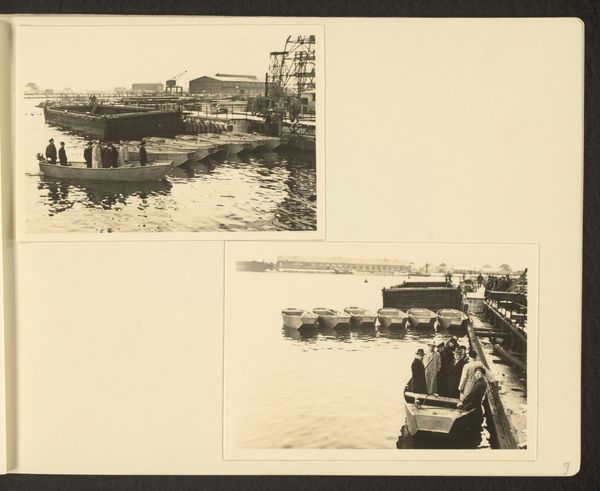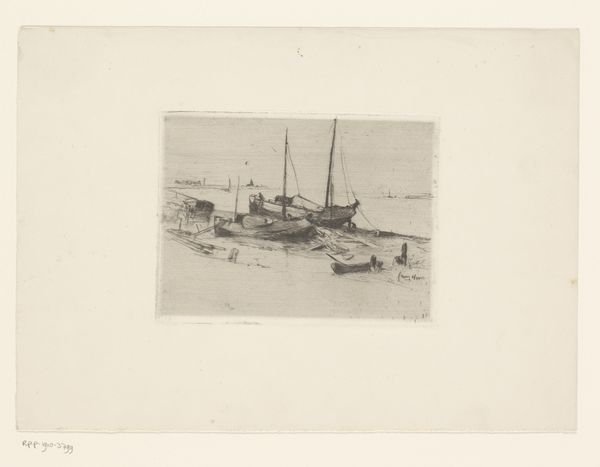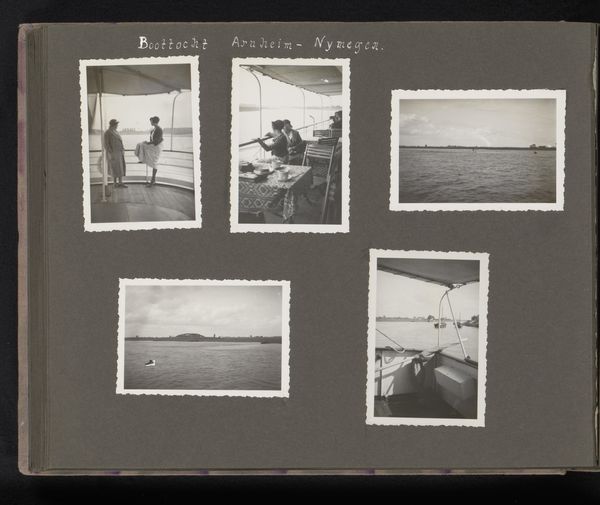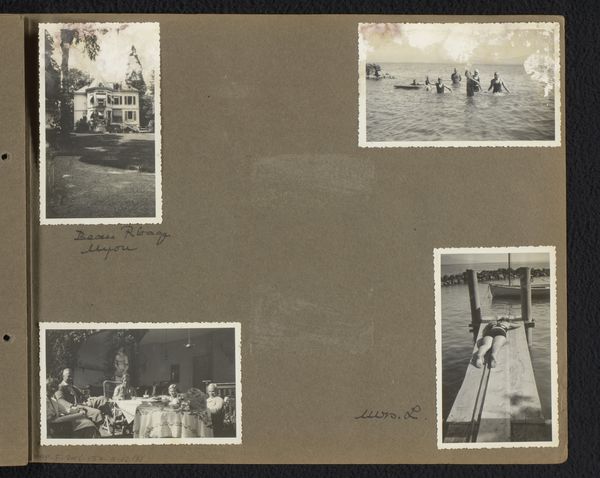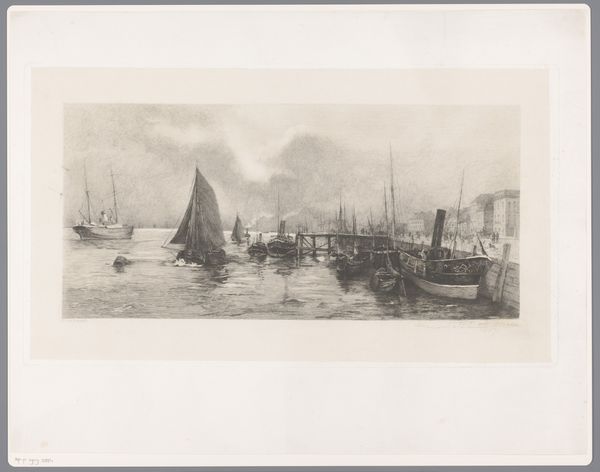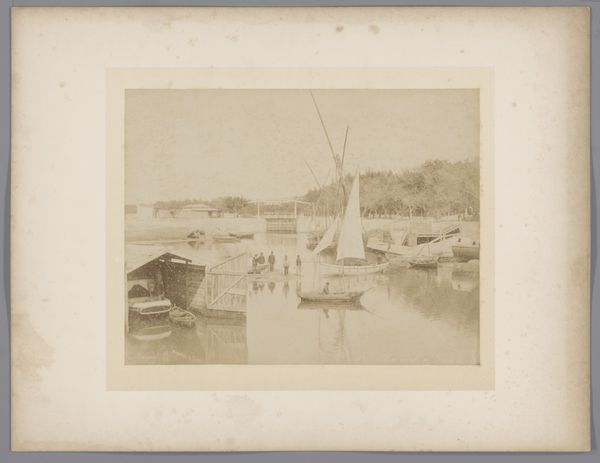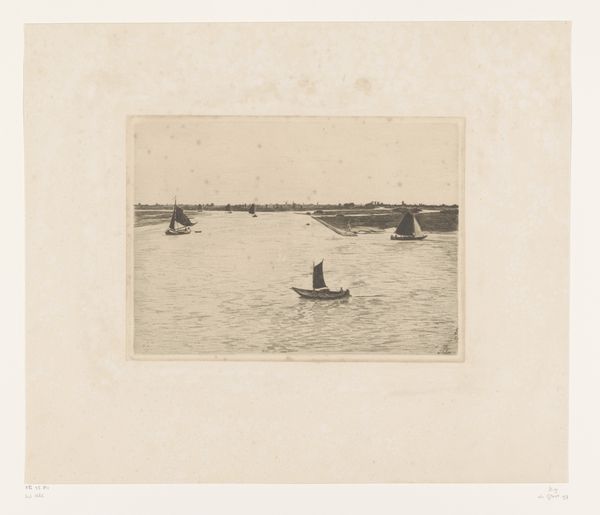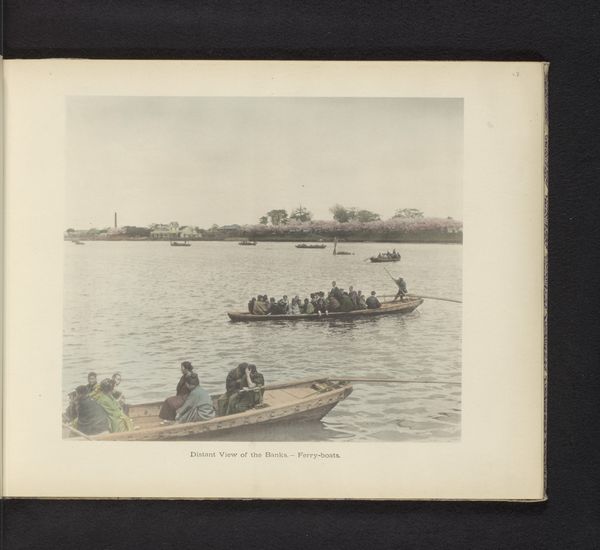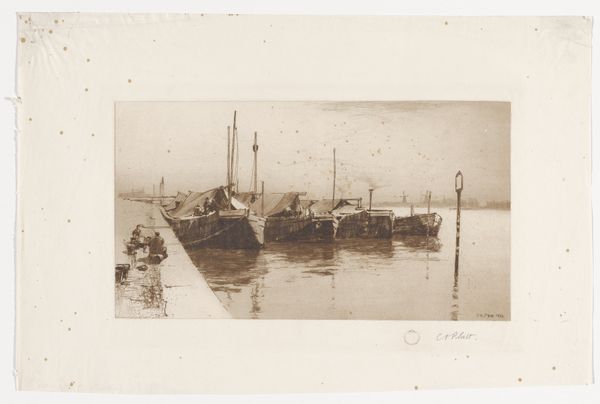
Dimensions: height 70 mm, width 100 mm, height 150 mm, width 210 mm
Copyright: Rijks Museum: Open Domain
Editor: Here we have "Proefvaart," a gelatin-silver print dating back to 1953. The multiple boats create such a sense of openness and possibility, even though the monochrome flattens the perspective. How do you read this composition? Curator: Notice how the placement of the photographs within the album page affects their relationship. The top image focuses our eye on a solitary figure interacting with his vessel, the crisp tonality emphasizing the tangible textures of the boat and the rippling water. The second image diffuses the tonal range and draws back to a wider scene where individual meaning gets absorbed. Editor: So it’s about the relationships within the photographic frame as well as between the two images on the page? Curator: Precisely. Semiotically, water signifies change and movement. The boats are variations on that theme, pointing different ways, in the first anchored but the second set floating on the tide, directionless. The materiality of gelatin silver, its capacity for capturing detail, paradoxically lends a documentary feel while also being a deliberate artistic choice by the photographer, filtering and selecting specific elements to be visible within each frame. What are the recurring shapes? How do they impact your reading? Editor: Well, the boats themselves create a horizontal rhythm, yet are disrupted by the vertical presence of the figures… but the horizon is consistently straight in both pictures, right? Curator: Good eye. Even as figures seek independence and movement, the landscape's composition emphasizes order. The structure suggests constraints. Editor: I see now, there's a dialogue between freedom and control that echoes between each image and the page itself. Curator: A beautiful encapsulation, emphasizing the strength of formal readings.
Comments
No comments
Be the first to comment and join the conversation on the ultimate creative platform.

